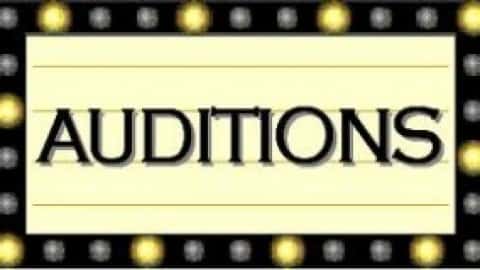As voice-over artists, we have the incredible power to breathe life into words, creating vivid auditory experiences for audiences. Within the exciting world of voice-over, a realm of narration extends beyond mere words, enriching the world of those who cannot fully experience visual content.
Welcome to the world of Audio Description (AD), a form of narration that opens doors to a more inclusive media landscape for the blind and visually impaired. This guide will delve into the depths of Audio Description, exploring its significance, techniques, and the opportunities it presents for voice-over artists.
What is Audio Description?
Imagine a movie, a TV show, or a play where visuals are pivotal in conveying crucial information. Now, envision experiencing these visual wonders solely through sound. That’s where Audio Description comes into play. Often referred to as AD, Video Description, or Visual Description, this narrative technique paints a comprehensive picture of key visual elements within media for individuals with visual impairments.
For instance, imagine a bustling cityscape at sunrise, with towering skyscrapers casting long shadows over the streets. Cars honk, and pedestrians hurry along the sidewalks, their footsteps echoing against the pavement. The sun’s golden rays gradually illuminate the scene, revealing vibrant storefronts and colorful billboards that adorn the city’s bustling heart.
Key Elements of Audio Description
At the heart of Audio Description lies its ability to fill in the visual gaps, allowing blind and visually impaired audiences to fully grasp the essence of a scene. AD descriptions are thoughtfully placed during natural pauses in audio, sometimes overlapping dialogue when necessary. Through well-crafted narration, AD captures gestures, actions, scenery, and expressions that may otherwise remain hidden. It’s like painting a canvas with words, bringing clarity to the canvas of imagination.
An AD script may sound something like this: The camera pans across a desolate landscape, revealing a lone figure silhouetted against the setting sun. The wind whistles through the grass, and the figure’s footsteps crunch softly on the gravel. Their face is etched with determination as they gaze into the horizon, a storm brewing in the distance.
Use Cases and Applications
The reach of Audio Description extends across diverse domains. In movies, TV shows, and theatrical performances, AD lends its voice to narrate visual nuances that might be missed otherwise. But AD’s influence doesn’t stop there. Audio-described tours in museums and art exhibitions offer a gateway for the blind and visually impaired to engage with the visual arts. Even at live events like sports matches, ceremonies, and royal weddings, AD enhances accessibility, enabling a deeper connection to the moment.
Imagine standing before a captivating painting in an art gallery. With Audio Description, a narrator’s voice guides you through the colors and shapes that compose the artwork. You can almost feel the textures and brushstrokes as the narration unravels the artist’s intentions, allowing you to appreciate the masterpiece in ways you couldn’t before.
History and Evolution of Audio Description
The roots of Audio Description trace back to the late 1920s, when cinema embarked on the transition to “talkies.” The desire to make movies accessible to the visually impaired led to the birth of AD. Over the years, AD evolved from radio simulcasts of films to its integration into television programming. The 1980s witnessed the birth of the Descriptive Video Service (DVS), a game-changer that brought AD to TV shows. The journey continued with advancements like AD for streaming platforms, making AD an integral part of the media landscape.
In 1990, the Descriptive Video Service (DVS) revolutionized television programming by introducing audio description to audiences. This marked a significant leap in accessibility, as key visual elements were meticulously narrated, enhancing the viewing experience for blind and visually impaired individuals.
Legislation and Mandates
The impact of AD has not gone unnoticed by lawmakers. Countries like Canada, the United Kingdom, and the United States have implemented regulations to ensure AD’s presence in media. These regulations require a minimum percentage of programming to feature AD, fostering a more inclusive media environment. For instance, in the United States, the 21st Century Communications and Video Accessibility Act solidified the FCC’s jurisdiction to enforce video description requirements, contributing to the wider adoption of AD.
In the United Kingdom, the Ofcom code on television access services mandates that broadcasters on air for at least five years broadcast at least 10% of their programming with audio descriptions. This initiative aims to ensure that a significant portion of content is accessible to individuals with visual impairments, making television more inclusive and diverse.
Audio Description Techniques
Creating effective Audio Description requires a delicate balance between description and natural audio flow. AD narrators watch and analyze media to craft descriptive scripts that capture essential visual details. These descriptions are then integrated into the media through secondary audio tracks or separate assets. By leveraging pauses in dialogue and harmonizing with the original content, AD narrators bring the world of visuals to life through sound.
Crafting an AD script involves keen observation and creativity. As you watch a scene, imagine you’re the eyes of someone experiencing blindness. Every detail matters – from how characters interact to their facial expressions’ subtleties. Your script should seamlessly fit into natural pauses, enhancing comprehension without overshadowing the original audio. The result is a synchronized dance of words that paints the visual tapestry of a scene.
Challenges and Rewards for Voice-Over Artists
As a voice-over artist delving into the world of Audio Description, you’ll encounter unique challenges and profound rewards. Crafting descriptions seamlessly integrating with the source material demands a keen understanding of timing, tone, and narrative flow. Balancing the art of description with the essence of the original content is an art form in itself. These challenges come with unparalleled rewards: your voice becomes the bridge that connects individuals with visual impairments to the magic of storytelling, allowing them to partake in the rich tapestry of human experiences.
Mastering the craft of AD narration requires a delicate touch. You’ll need to skillfully convey visual information without overshadowing the original audio. Imagine describing a suspenseful scene – your words must build tension while respecting the pacing of the original dialogue. The reward lies in knowing that your narration enhances the viewing experience, offering blind and visually impaired individuals a window into worlds they might have otherwise missed.
Your Journey into Audio Description
Embarking on a journey into Audio Description opens doors to a unique avenue of voice-over work. The skills you’ve honed as a voice artist provide a strong foundation, but AD introduces new dimensions. It’s not just about reading a script but crafting an immersive experience through your narration. Understanding the nuances of description, mastering pacing, and seamlessly blending your voice with the original content are key to becoming a skilled AD narrator.
If you’re eager to explore Audio Description, begin by watching media with an analytical eye. Practice describing scenes in your own words, focusing on capturing the essence while maintaining the audio’s rhythm. Experiment with your voice to strike the right balance between description and dialogue. Invest time in understanding the AD guidelines specific to your region, as they provide valuable insights into audience expectations.
Embracing the Future of Accessibility
In a world that increasingly values inclusivity, Audio Description shines as a beacon of accessibility. Streaming platforms like Netflix and broadcast networks are incorporating AD into their programming, acknowledging the diverse needs of their audiences. As a voice-over artist, you can contribute to this positive change. Your narration becomes the conduit through which individuals with visual impairments can engage with stories, culture, and art.
The future of media is shaped by the voices that champion accessibility. Streaming giants like Netflix are making strides by incorporating AD into their original series, furthering the reach of inclusive storytelling. By embracing the art of Audio Description, you expand your skill set and contribute to a more diverse and accessible media landscape.
In the realm of voice-over artistry, Audio Description is an area brimming with potential. It’s a calling that transcends narration, inviting you to be a storyteller, an interpreter of visuals, and a catalyst for inclusivity. By harnessing the power of your voice, you can illuminate the unseen, empower the marginalized, and create a world where storytelling knows no bounds.
Voice-over artists possess the ability to bridge gaps and paint pictures with words. Audio Description isn’t just about narration; it’s about forging connections and enriching lives. With every description brought to life, voice-over artists have the opportunity to create a more inclusive and empathetic world, one word at a time.
Caroline Turner Cole is a voice-over artist, writer, yogi, and coach based in Dallas, TX. Connect via Instagram @carolinecolestories.










